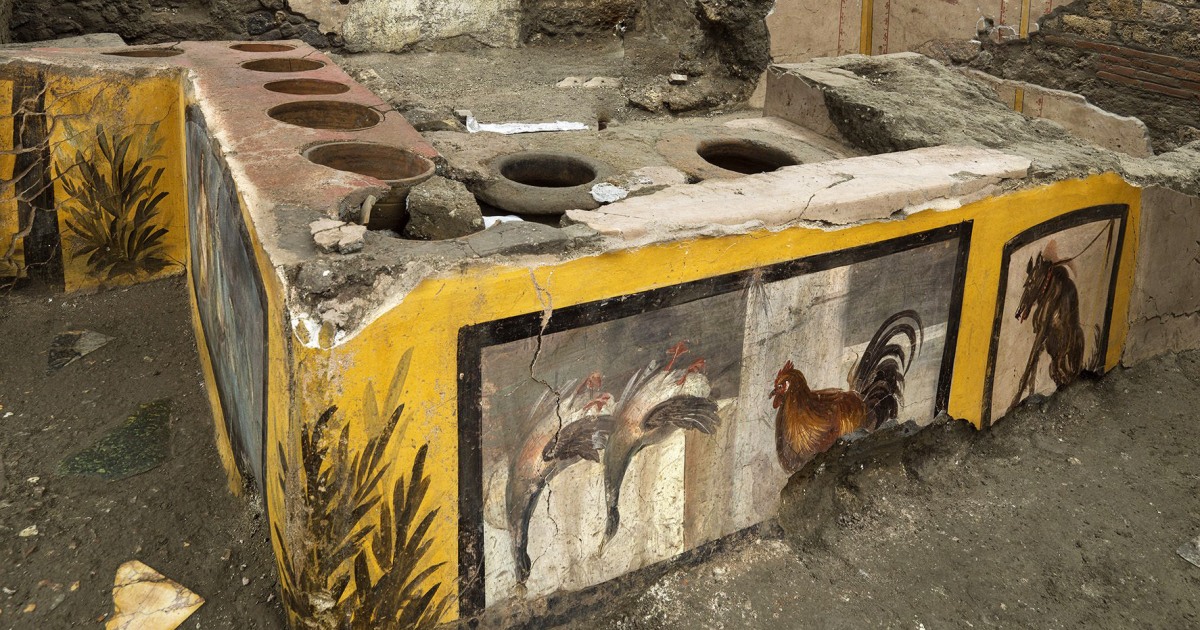Archaeologists in Pompeii, the city buried by a volcanic eruption in 79 AD, made the extraordinary discovery of a food and hot drinks shop with frescoes that served the ancient equivalent of street food for Roman passersby.
Known as the termopolium, a Latin counter for hot drinks, the store was discovered on the Regio V site of the archaeological park, which has not yet been opened to the public, and opened on Saturday.
Traces of food almost 2,000 years old were found in some of the deep terracotta pots containing hot food, which the store owner placed on a counter with circular holes.
The front of the counter was decorated with brightly colored frescoes, some depicting animals that were part of the ingredients of the food sold, such as a chicken and two ducks hanging upside down.
“This is an extraordinary finding. It is the first time that we have excavated an entire thermopoly, ”said Massimo Ossana, director of the Archaeological Park of Pompeii.
Archaeologists also found a decorated bronze bowl known as patera, ceramic pots used to cook stews and soups, wine bottles and amphorae.
Pompeii, 23 km (14 miles) southeast of Naples, was home to some 13,000 people when it was buried under ash, pumice and dust while withstanding the force of an eruption equivalent to many atom bombs.
“Our preliminary analyzes show that the numbers drawn on the front of the counter represent, at least in part, the food and drinks that were sold there,” said Valeria Amoretti, an anthropologist at the site.
Amoretti said that traces of pork, fish, snails and beef were found in the containers, a discovery she called “testimony to the wide variety of animal products used in preparing dishes”.
About two-thirds of the 66-hectare (165-acre) old city has been discovered. The ruins were not discovered until the 16th century and organized excavations started around 1750.
A rare documentation of Greco-Roman life, Pompeii is one of Italy’s most popular attractions and a UNESCO World Heritage Site.

